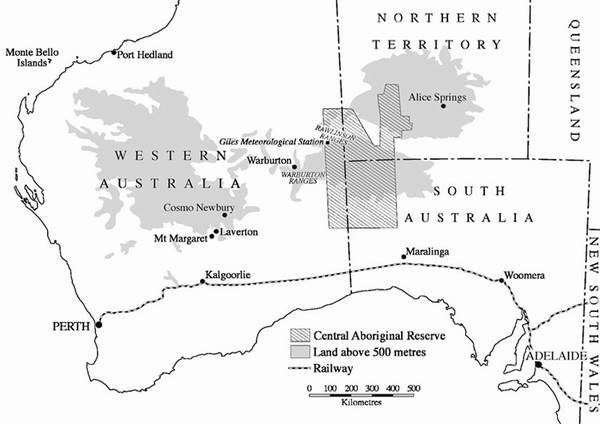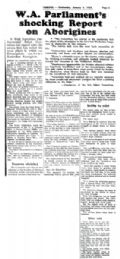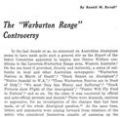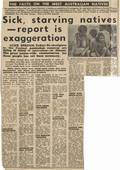Overview of the Warburton Ranges controversy
In December 1956, the report of a select committee which inquired into the state of Aborigines, was tabled in the Western Australian parliament. For a month it attracted no attention, but on 9 January 1957 the Sydney Communist Party newspaper, Tribune, described the report as ripping aside 'the screen that has veiled the cruel plight to which our Governments condemn Australian Aborigines'. According to this report, malnutrition, blindness and disease, abortion, infanticide, burns and other injuries were all commonplace among the Wongi people of the Warburton Ranges region.
Western Australian Parliament's shocking report on Aborigines
Source: Tribune, Wednesday, 9 January 1957, p. 3
More info on Western Australian Parliament's shocking report on Aborigines
The mainstream newspapers across the country took up the story with headlines such as 'We Can't Let them Die' and 'Aboriginals Starve and Nothing's Being Done'. The Age editorialised: 'Get the facts on the Aborigines'.
Letters flooded in to newspaper editors.
Pastor Wiltshire, United Aborigines Mission, 8 February 1957
Source: The Age, 8 February 1957
More info on Pastor Wiltshire, United Aborigines Mission, 8 February 1957
In response to this publicity three separate parties visited the area bounded by the Rawlinson Ranges to the north, Laverton to the west and the transcontinental railway to the south.

Rockets were launched at the Woomera Rocket Range in a north-westerly direction towards the Monte Bello Islands.
Source: Drawn by Gary Swinton, Monash University
The first was a group of journalists led by Rupert Murdoch, proprietor and editor of the Adelaide News. The second was a Western Australian Department of Health official party. The third group was made up of anthropologists, Ronald and Catherine Berndt and Ruth Fink. All were critical, to differing degrees, of the Select Committee Report.
The anthropological survey team found the report to be exaggerated. They disputed the finding that malnutrition and disease was widespread. However, they argued that the status of Aboriginal reserves should be examined, and that mining rights should not be granted in reserves. Land, they argued, was the Aborigines' most valuable tangible asset and it had never received the same attention in Australia as it had in the case of indigenous populations in the United States or New Zealand.
The 'Warburton Range' controversy, by anthropologist Ronald Berndt
Source: Australian Quarterly, June 1957
Download The 'Warburton Range' controversy, by anthropologist [PDF 1789kb]
Rupert Murdoch was vehement in his rejection of the findings. After flying over Central Australia he commented: 'These fine native people have never enjoyed better conditions'. In addition, he observed that 'great companies like International Nickel of Canada are watching for and have prospects of finding some of the world's most valuable mineral deposits in this very area'. Murdoch's article was supported with a deceptive photograph of a plump, happy family group. What readers were not told was that the photograph had been taken four years earlier, by Bill Grayden, chairman of the Select Committee, rather than recently, as Murdoch claimed.
Rupert Murdoch claimed the Warburton Ranges report to be an exaggeration
Source: The News (Adelaide), 1 February 1957, p. 3
More info on Rupert Murdoch claimed the Warburton Ranges report to be an exaggeration
Related resources
382752
- 382752
- 382792
- 382808
- 382864
- 382932
- 382944






